
Cat declawing, a surgical procedure that involves the removal of the last bone of each toe from which the claw grows, has long been a controversial topic among pet owners and veterinarians alike. This procedure is not a simple nail trim but a significant surgery that can have lasting impacts on a cat’s physical and emotional well-being. Understanding the risks associated with declawing and exploring alternatives is essential for any cat owner considering this option.
FAQs on Cat Claw Care
Navigating cat claw care can raise many questions for pet owners, from the basics of trimming to understanding your cat’s behavior. This section addresses common FAQs to help you feel more confident in managing your feline friend’s claw health.
- How often should I trim my cat’s claws? The frequency can vary, but a general guideline is every 2-4 weeks. However, observe your cat’s activity level and claw growth rate to adjust accordingly.
- Can I trim my cat’s claws if they are black and I can’t see the quick? Yes, but proceed with caution. Trim just the tips to avoid the quick. If unsure, seek advice from a vet or professional groomer.
- What if my cat absolutely refuses to have their claws trimmed? Try different approaches to make them comfortable or consider professional grooming services that are experienced in handling cats.
- Do indoor cats need their claws trimmed more often than outdoor cats? Typically, yes. Outdoor cats naturally wear down their nails through their activities, while indoor cats might not have as many opportunities to do so.
- Are there signs of claw problems I should watch for? Yes, watch for limping, excessive licking of the paws, or reluctance to scratch. These could indicate pain or discomfort possibly due to overgrown claws or an underlying issue.
Risks of Declawing
- Pain and Discomfort: Declawing can lead to immediate and chronic pain for cats. The procedure often results in a change in the way a cat walks, which can lead to discomfort and pain in the paws, legs, and back.
- Behavioral Changes: Cats may exhibit changes in behavior after being declawed. Some may become more aggressive, using their teeth as a primary means of defense since their claws, their first line of defense, have been removed. Others may become more withdrawn or exhibit signs of depression.
- Litter Box Issues: The pain or discomfort in their paws may discourage declawed cats from using their litter box, as the texture of the litter can be uncomfortable on their sensitive paws.
- Increased Risk of Complications: Like any surgical procedure, declawing carries risks of complications such as infection, tissue necrosis, and delayed wound healing. Long-term, cats may experience regrowth of improperly removed claws, leading to painful cysts or bone spurs.
Alternatives to Declawing
Thankfully, there are several humane alternatives to declawing that can prevent your cat from scratching unwanted areas without causing them harm:
Regular Trimming is Key
- Trim Regularly: Keep your cat’s claws at a manageable length to prevent overgrowth and potential issues such as ingrown nails. For most cats, trimming every 2-4 weeks is sufficient.
- Use the Right Tools: Invest in a quality pair of cat nail clippers to ensure a clean, stress-free cut. Blunt instruments can split the nail, causing discomfort.
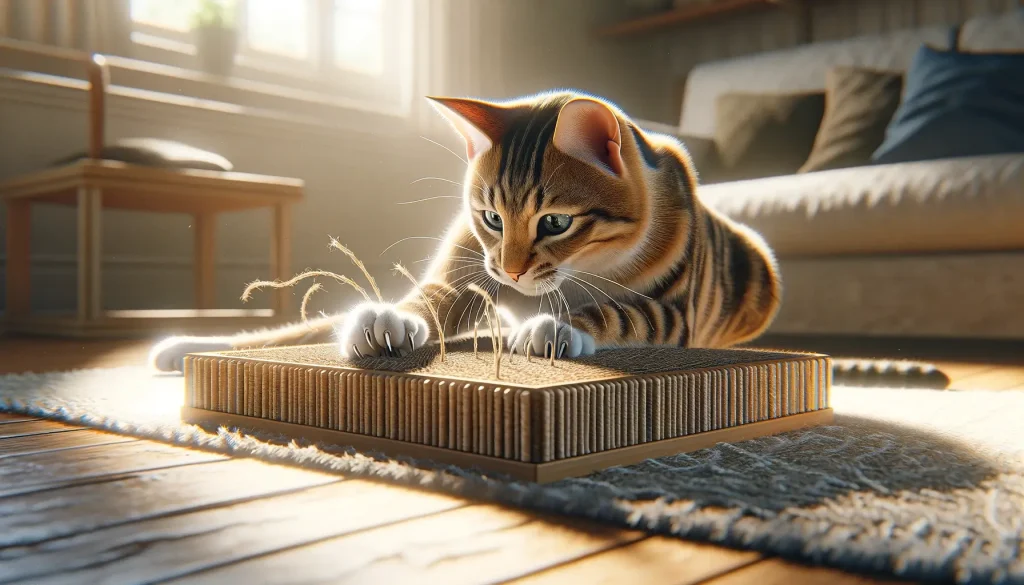
Provide Appropriate Scratching Surfaces
- Scratching Posts: Cats naturally maintain their claw health through scratching, which helps remove the outer nail layer. Offer various scratching posts or boards in your home.
- Material Matters: Cats have different preferences. Offering a variety of materials, like sisal rope, cardboard, or carpet, can help you discover your cat’s favorite.
Monitor Claw and Paw Health
- Regular Checks: Examine your cat’s paws and claws regularly for any signs of issues such as splits, cracks, or signs of infection like swelling or redness.
- Watch for Behavioral Changes: Changes in your cat’s behavior, such as avoiding scratching posts or limping, can indicate claw or paw problems.
Encourage Natural Claw Care Behaviors
- Provide Opportunities for Natural Care: Besides scratching posts, incorporating climbing structures or toys that encourage claw use can help your cat naturally maintain claw health.
- Interactive Play: Engage in play that encourages your cat to grab, claw, and pull on toys, mimicking natural behaviors and providing a form of claw care.
Seek Professional Advice When Necessary
- Veterinary Check-ups: Include claw and paw checks in your regular veterinary visits to catch any potential issues early.
- Professional Trimming: If you’re uncomfortable trimming your cat’s claws, consider scheduling regular appointments with a professional groomer.
Maintaining your cat’s claw wellness doesn’t have to be complicated. By following these simple guidelines, you can ensure your cat’s claws stay healthy, contributing to their overall happiness and wellbeing. Remember, healthy claws are part of a happy cat’s life, enabling them to explore, play, and relax in comfort.
When to Visit the Vet
- Lameness or Infection: If you notice any signs of lameness, infection, or tissue necrosis in your cat’s paws, a vet visit is crucial. These symptoms can arise from improper claw trimming or prior declawing.
- Behavioral Changes: Changes like litter box aversion or increased biting might indicate pain or discomfort from claws or previous declawing. Your vet can provide guidance and solutions.
- Considering Alternatives: Before opting for declawing or a tendonectomy, consult with your veterinarian. They can offer advice on these procedures and possible complications, ensuring you make an informed decision for your cat’s health and happiness.
Whether providing at-home care or seeking veterinary assistance, the key is to ensure the health and comfort of your feline friend. Your actions can prevent complications and support your cat’s physical and mental well-being.
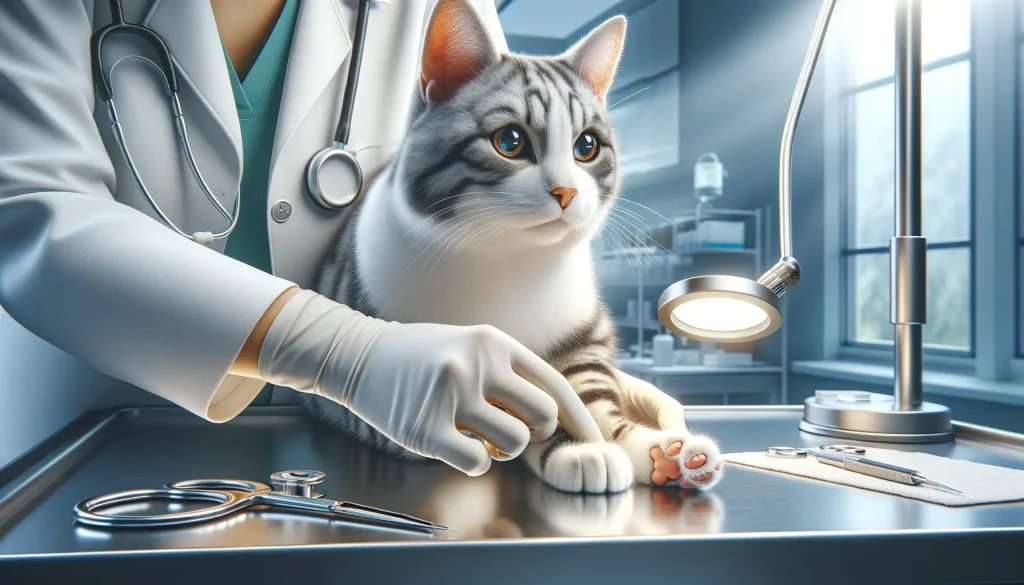
Signs of Trouble With Your Cat’s Claws
Keeping an eye on your cat’s claws is not just about maintenance; it’s also about spotting potential health issues before they become serious. Understanding the signs of trouble with your cat’s claws can help you act swiftly, ensuring your pet remains happy and healthy. Here are key indicators that something might be amiss with your cat’s claw health:
- Excessive Licking or Biting at the Paws: If your cat is paying unusual attention to its paws, this could indicate discomfort or pain possibly related to an ingrown nail, infection, or injury.
- Swelling or Redness: Visible swelling or redness around the claws or paw pads might suggest an infection or inflammation. Such signs should not be ignored, as they can lead to more severe complications if left untreated.
- Changes in Claw Appearance: Discoloration, splitting, or thickening of the claws can be signs of nutritional deficiencies, infections, or other health issues.
- Difficulty Walking or Reluctance to Jump: If your cat shows hesitation or discomfort while walking, jumping, or playing, it could be experiencing pain related to its claws or paws.
- Limping: Limping is a clear sign of discomfort or pain. While it may not always be related to claw health, it’s a strong indicator that your cat needs to be examined by a veterinarian.
- Avoidance of Scratching Posts: A sudden disinterest in using scratching posts can indicate that scratching causes pain or discomfort, possibly due to an underlying claw or paw issue.
Early detection and intervention are crucial for resolving claw health issues with minimal discomfort for your cat. If you notice any of these signs of trouble, it’s important to consult with a veterinarian for a thorough examination and appropriate treatment. Regular observation and care of your cat’s claws play a significant role in preventing these issues, ensuring your feline friend stays active and comfortable.
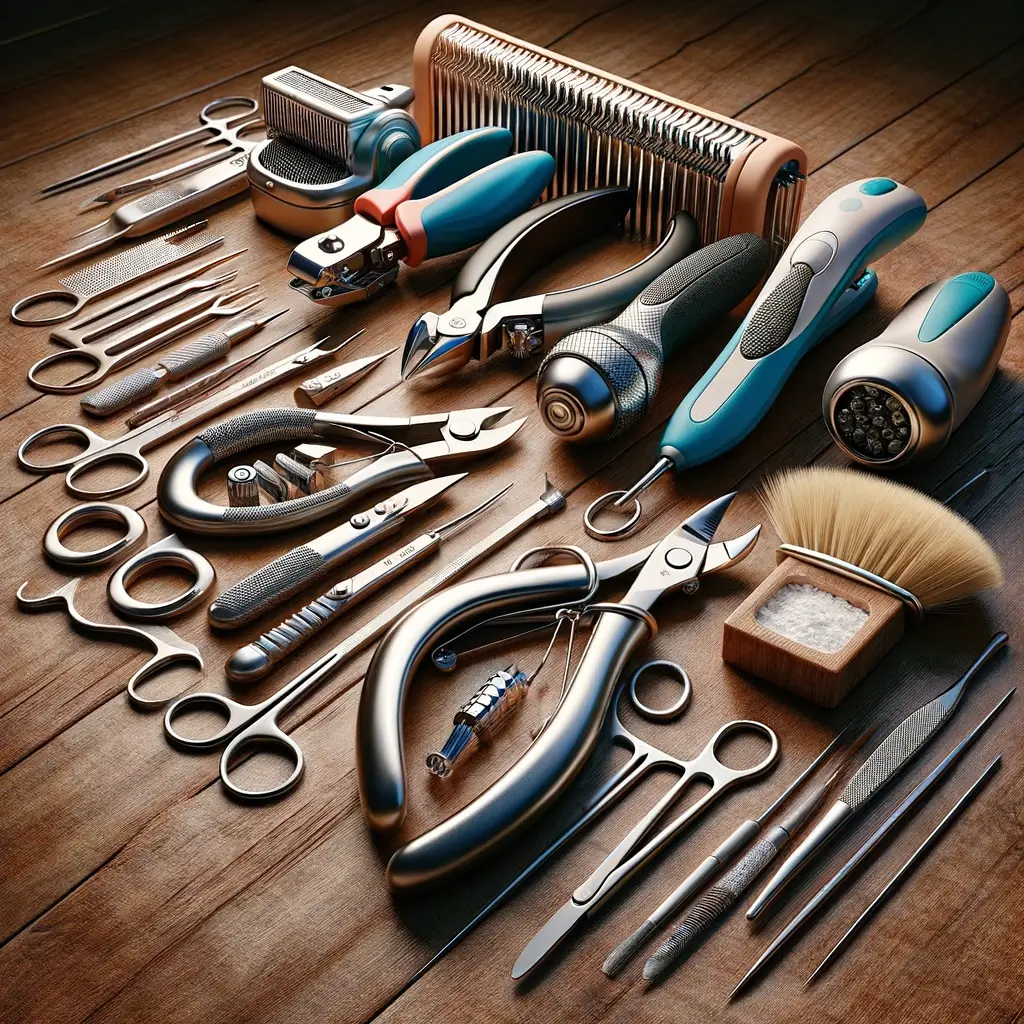
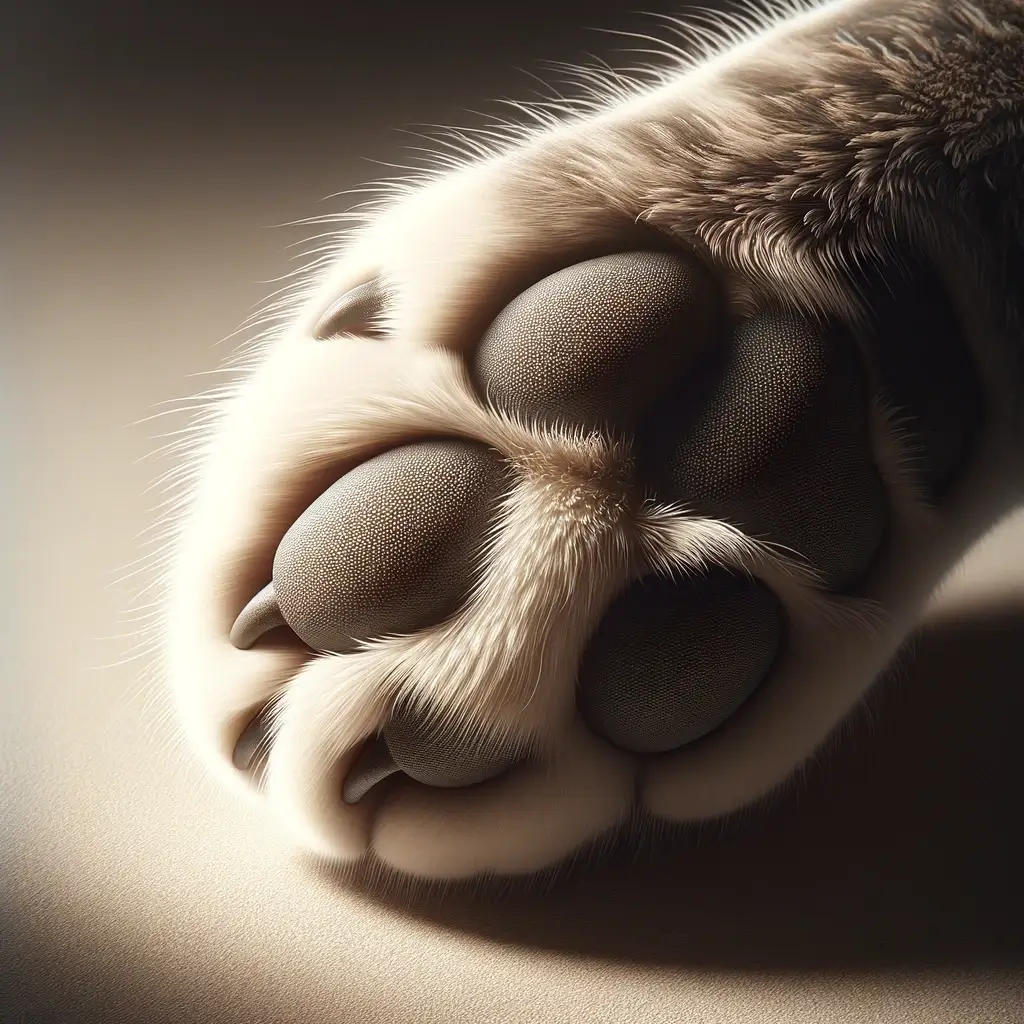
Choosing the Right Tools for Cat Claw Care
Selecting the appropriate tools is a cornerstone of effective cat claw care. With the right equipment, maintaining your cat’s claws becomes a safer, more comfortable experience for both of you. Here’s a guide to choosing the best tools for the job:
- Cat Nail Clippers: There are several types of clippers available, including scissor-style, guillotine-style, and those designed specifically for small pets. Opt for one that feels comfortable in your hand and is the right size for your cat’s claws.
- Styptic Powder or Pencil: Accidents can happen, and you may nick the quick, causing bleeding. Having styptic powder or a pencil on hand allows you to quickly stop the bleeding and minimize discomfort for your cat.
- Magnifying Glass and Good Lighting: For those with difficulty seeing the quick, especially in cats with dark claws, a magnifying glass and good lighting can be invaluable tools to ensure precise trimming without causing harm.
- Scratching Posts and Pads: Integrating various scratching surfaces in your home not only helps your cat maintain their claw health naturally but also diverts their scratching from furniture and other undesired areas.
Investing in high-quality tools not only makes the claw-trimming process easier but also ensures the safety and comfort of your beloved pet. Always introduce any new tool gradually to your cat to avoid stress and ensure a positive association. With the right approach and tools, claw care can become a bonding experience rather than a chore.
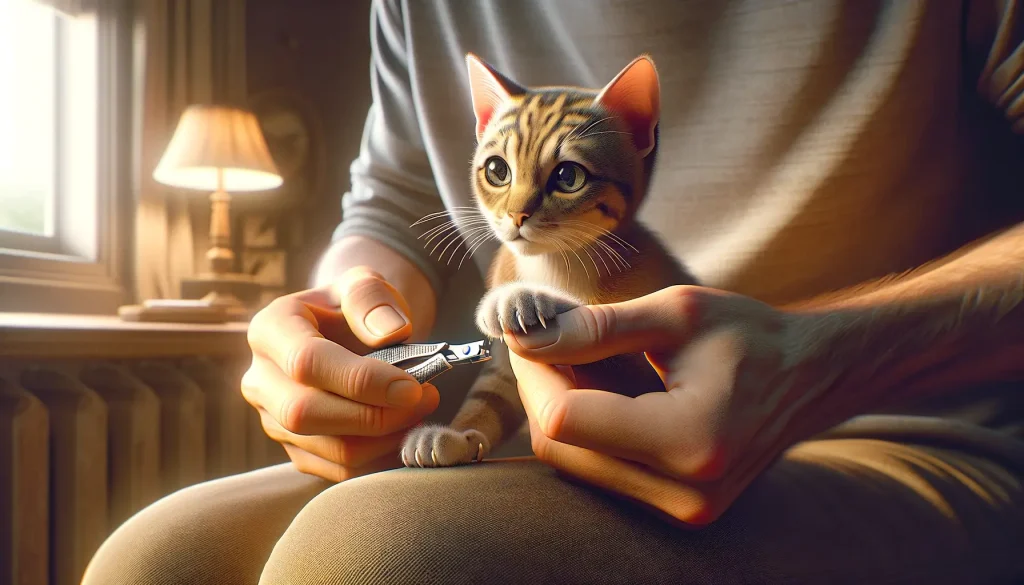
Tips for Introducing Claw Care to Kittens
Introducing claw care to kittens can set the foundation for a lifetime of good habits, ensuring they grow up comfortable and cooperative during claw trimming sessions. Starting early helps kittens get accustomed to the process, making it less stressful for both you and your furry friend. Here’s how to introduce claw care to your kitten effectively:
- Start Early and Go Slow: Begin handling your kitten’s paws gently from a young age, pressing softly to extend the claws. This gets them used to the sensation without the stress of immediate trimming.
- Use Positive Reinforcement: Reward your kitten with treats and praise during and after handling their paws. This association makes claw care a positive experience.
- Choose the Right Tools: Use a sharp, kitten-sized nail trimmer to ensure a quick, clean cut. Blunt tools can cause discomfort and make the process more difficult.
- Trim in a Comfortable Setting: Find a quiet, comfortable spot for trimming to help your kitten stay calm. A familiar environment reduces stress and makes the process smoother.
- Keep Sessions Short: Kittens have short attention spans. Keep the claw trimming sessions brief, focusing on a few claws at a time if necessary.
- Monitor and Adapt: Every kitten is unique. Pay attention to how your kitten responds and adjust your approach as needed. Some may tolerate more handling than others.
By incorporating these tips into your routine, you not only maintain your kitten’s claw health but also build trust and strengthen your bond. Early introduction to claw care, coupled with patience and consistency, can make a significant difference in how your cat perceives paw handling and trimming throughout their life.
Beginner Guide to Raising Quail at Home
What are the Signs of a Dog Concussion?
What Causes Your Dog’s Ears to Smell Bad?
When your dog’s ears start to emit an unpleasant odor, it might leave you puzzled…
Methimazole Treatment for Cat Hyperthyroidism
Methimazole plays a crucial role in managing feline hyperthyroidism, a condition marked by an overactive…
Got Hummingbirds in your Backyard? Here’s How to Care for Them.
Why Does Your Cat Pee Outside the Litter Box?
Cat’s Litter Box Issues It’s not uncommon for cat owners to face the frustrating dilemma…




